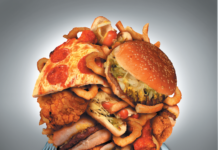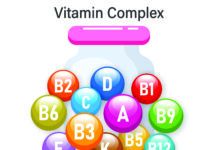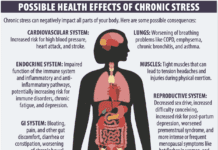Home Search
celiac - search results
If you're not happy with the results, please do another search
Confusion Reigns About Gluten
Americans are spending $10.5 billion a year on products labeled gluten-free, but only about one-third of consumers can correctly identify what gluten is. A telephone survey of 1,012 US adults conducted for NSF International found plenty of confusion about gluten, a protein found in grains including wheat, barley and rye that patients with celiac disease must avoid. Just over a quarter (26%) mistakenly said they think products that are wheat-free are necessarily also gluten-free; 15% defined gluten as simply wheat. On the other hand, 47% erroneously said rice contains gluten and 34% said potatoes do. Asked reasons for avoiding gluten, 19% said they suffer from gluten allergy or sensitivity, 12% said going gluten-free makes them feel healthier, and 9% self-identified as having celiac disease (an autoimmune disorder that scientists say affects only about 0.75% of the population).
What Do Those Food-Label Terms Really Mean?
A trip to the supermarket can feel like running a gauntlet of buzzwords. This product promises its reduced sodium, while that one is natural and gluten-free. Is a food made with extra fiber better than excellent source of fiber, or vice versa? Just how low in calories does a food have to be to boast that its low-calorie-and should you pick that label over one thats lower calorie or light?
Healthy Reasons to Put Farro on Your Plate
The ancient Roman legions knew something that modern chefs are only now rediscovering: Farro, a form of wheat that originated in the Middle Easts Fertile Crescent thousands of years ago, offers nutrition enough to march on with a nutty taste and pleasantly chewy texture. As chic restaurants around the country are demonstrating, farro is also versatile enough to substitute for rice and other more familiar grains in dishes ranging from risottos to salads, soups to breakfast bowls.
Dietitians Pick Top Trends
Trends to watch in nutrition-driven consumer choices this year will include growing popularity for seeds and nuts, green tea and ancient grains such as amaranth, quinoa, spelt and freekah, according to a survey of 500 registered dietitians. The survey, conducted for the journal Todays Dietitian, predicted that consumers will eat less red meat and continue to turn away from low-fat diets. Kale and coconut will remain popular based on their perceived health benefits (accurate for kale, less so for coconut), as will healthy choices like Greek yogurt and avocado. The dietitians also predicted consumers will keep trying gluten-free and wheat-free diets to lose weight (rather than out of genuine need, as in celiac-disease patients), despite a lack of evidence supporting such regimens for weight loss, while the so-called Paleo diet will gain in popularity. Also on the rise: misinformation about nutrition, fueled in part by the Internet.
The Pros and Cons of Frozen Foods
In the dead of winter, grocery shoppers often turn to the freezer aisle for out-of-season produce as well as easy-to-prepare entres. But with sales of frozen foods in decline-down an estimated 5% since 2009-the industry is launching a campaign, Frozen: How Fresh Stays Fresh, to boost awareness and promote frozen foods nutritional benefits. How do frozen foods really stack up?
Q. I was wondering if a gluten-free diet results in any deficiencies in vitamins/minerals...
Q. I was wondering if a gluten-free diet results in any deficiencies in vitamins/minerals or other essential parts of ones diet? My diet is a medical not personal choice.
FDA Gluten-Free Rules Take Effect
Patients with celiac disease can now buy products labeled gluten free with confidence that the foods really do have no more than trace amounts of the protein found in wheat and some other grains. US Food and Drug Administration rules requiring gluten-free products to contain fewer than 20 parts per million of gluten, originally published in 2013, are now binding on manufacturers. The agency says most people with celiac disease, which affects an estimated 3 million Americans, can tolerate those tiny amounts-the lowest level that can be consistently detected in foods using current scientific tools.
Q. After many years of digestive problems, I decided to go gluten-free and have...
Q. After many years of digestive problems, I decided to go gluten-free and have felt much better. Does this mean I need to go gluten-free for the rest of my life? Is there any diagnostic test other than if you feel better, stay gluten-free?
Wheat Berry Salad with Dried Apricots & Spiced Citrus Dressing
Whole grains shine in sturdy salads that are perfect for summer barbecues, picnics and potlucks. This multi-colored salad features delightfully chewy wheat berries and sun-kissed dried apricots in a lively dressing. You are probably most familiar with wheat in the form of flour, but wheat berries, which are the whole, unprocessed kernels of wheat, are also a tasty and highly nutritious ingredient for cooking. Wheat berries can be found in natural foods stores and large supermarkets.
Quinoa OK for Celiac Patients
Quinoa, the ancient grain thats enjoying renewed popularity, is free of the gluten protein that patients with celiac disease cant tolerate.




























